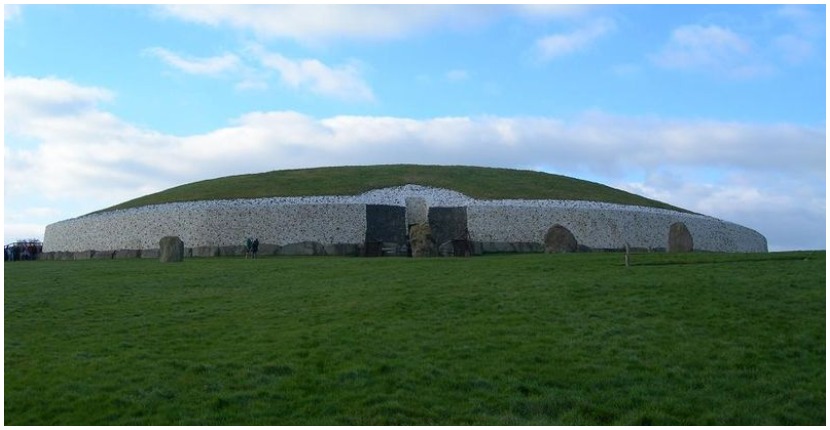Older than Stonehenge, older than the Great Pyramid of Giza, the Newgrange tomb in Ireland holds as many mysteries as each of those famous structures. The massive complex of Newgrange was built about 3200 BC, yet its existence was not discovered by modern-age humans until 1699, when a local landowner wanted the mound dug up for its stones.
Newgrange is a large circular mound with a stone passageway and chambers within. The mound is ringed by engraved “kerbstones” and has been classified by archaeologists as a passage tomb. Human bones were found in the chambers. “The remains of at least five people were recovered during excavation, although originally much more bone may have been placed there,” according to World Heritage Ireland. “Most of the bones found were cremated, although small amounts were unburned. Grave goods of chalk and bone beads and pendants as well as some polished stone balls were placed with the dead.”
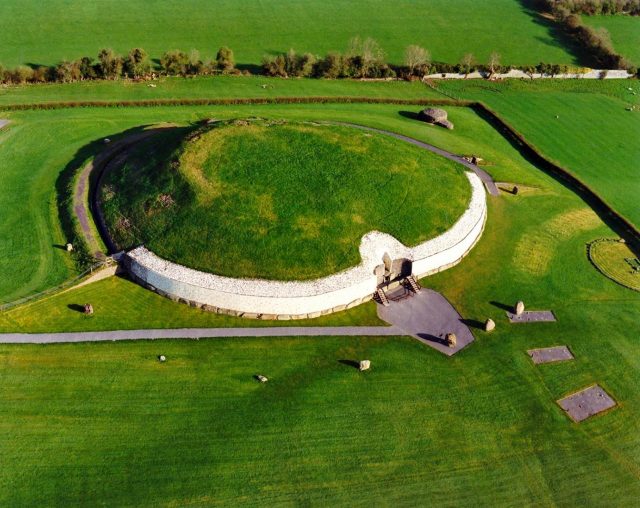
Newgrange was made with 200,000 tons of rock, most of which come from the vicinity of the construction, although the granite and quartz stones of the were transported from more distant places, probably from Wicklow and Dundalk Bay.
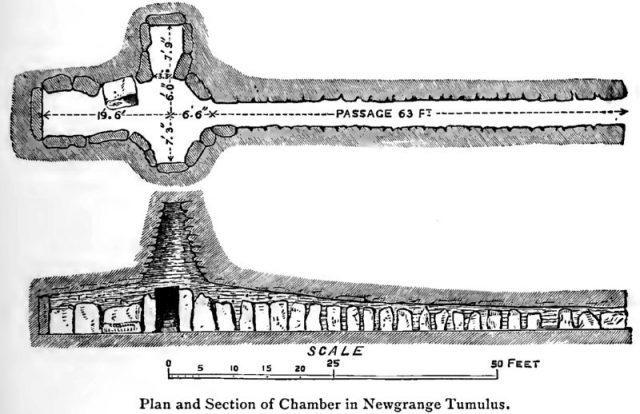
Newgrange’s kidney-shaped mound covers an area of more than one acre, retained at the base by the 97 kerbstones, some of which are richly decorated. The entrance stone and some of the other stones are considered highly accomplished pieces of sculpture, regarded as some of the finest achievements of European Neolithic art.
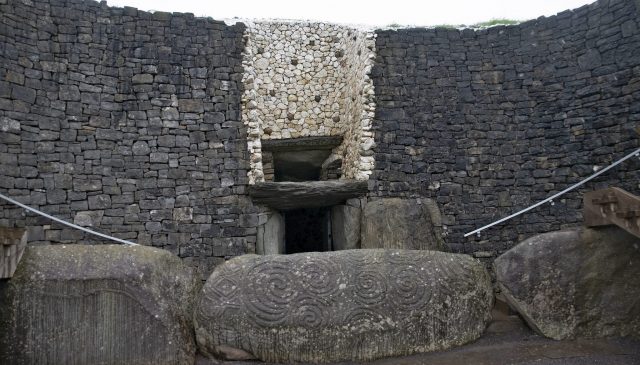
“The amount of time and labor invested in construction of Newgrange suggests a well-organized society with specialized groups responsible for different aspects of construction,” said its website.
One of the most tantalizing aspects of Newgrange is that it appears to be astronomically oriented: every year, on the morning of the winter solstice, the shortest day of the year, sunlight penetrates the passage and illuminates the floor of the chamber. As the sun rises higher, the beam widens within the chamber so that the whole room becomes dramatically illuminated. This event lasts for 17 minutes, beginning around 9 am.
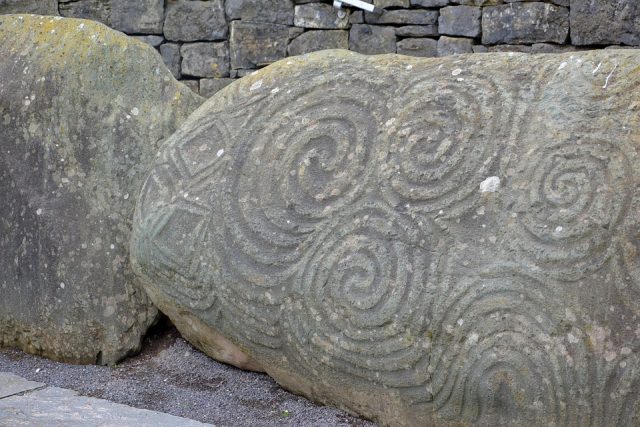
The accuracy of Newgrange as a time-telling device is amazing when one takes into account that it was built 500 years before the Great Pyramids.
“To the Neolithic culture of the Boyne Valley, the winter solstice marked the start of the New Year– a sign of nature’s rebirth and promising renewed life to crops, animals and humans. It may also have served as a powerful symbol of the inevitable victory of life over death, perhaps promising new life to the spirits of the dead,” said World Heritage Ireland.
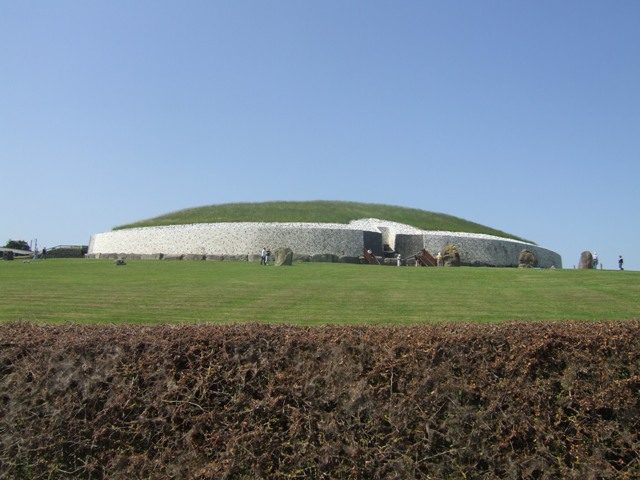
The question of who built it and why consumes archaeologists. Wrote Claire O’Kelly, “A tomb such as Newgrange would lead one to suppose that it must have been destined as the final resting-place of a leading or kingly family (passage-graves were collective tombs) but in the absence of the kind of evidence that has proved so informative in other lands, notably in Egypt, we can only speculate about the matter.”
Related Article: DNA Reveals the Origin of Stonehenge Builders
O’Kelly continued, “We do not know who built the Boyne tombs nor who were interred in them. There are more than 200 passage-graves in Ireland at present and there were originally more. It is generally thought that the practice of building passage-graves came to Ireland from Brittany, nevertheless, as far as the actual people who built them are concerned, very little more is known about the Boyne tombs.”
Nancy Bilyeau, a former staff editor at Entertainment Weekly, Rolling Stone, and InStyle, has written a trilogy of historical thrillers for Touchstone Books. Her new book, The Blue, is a spy story set in the 18th-century porcelain world. For more information, go to www.nancybilyeau.com
